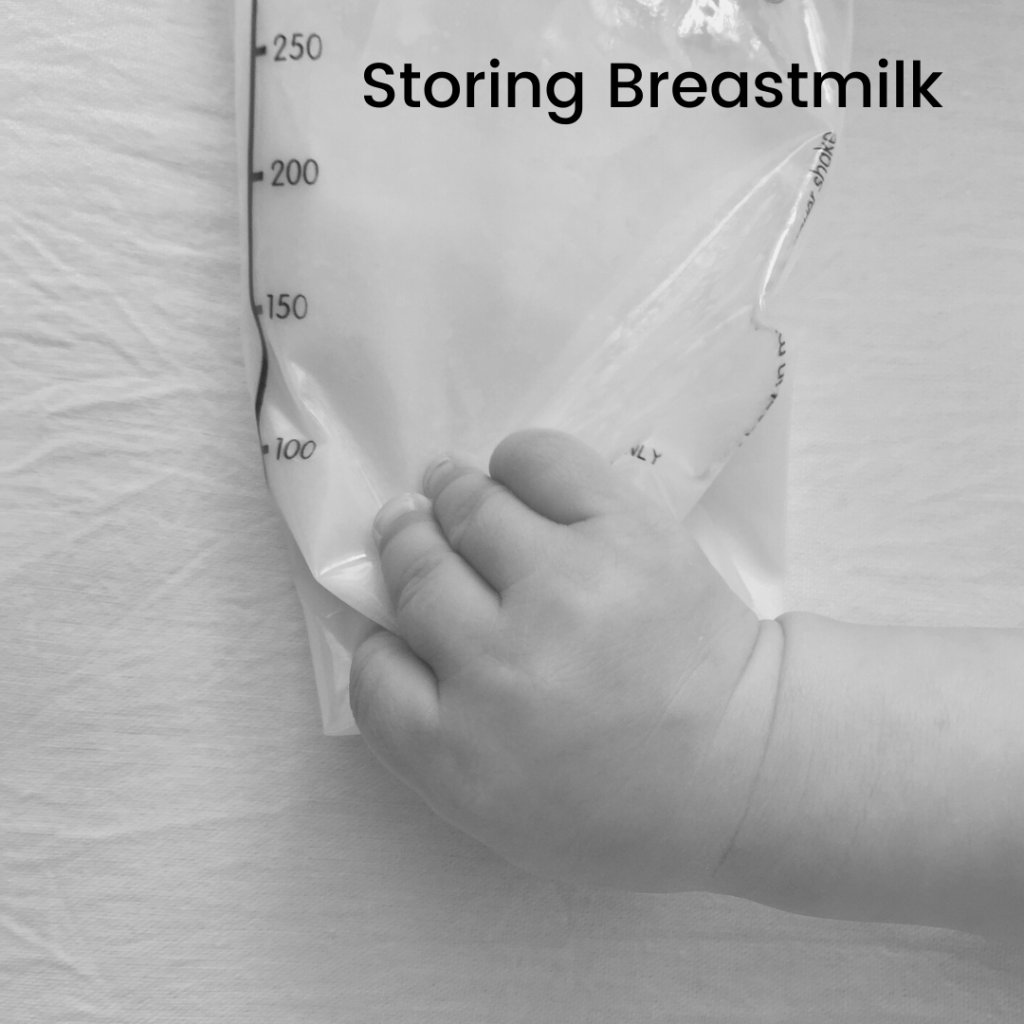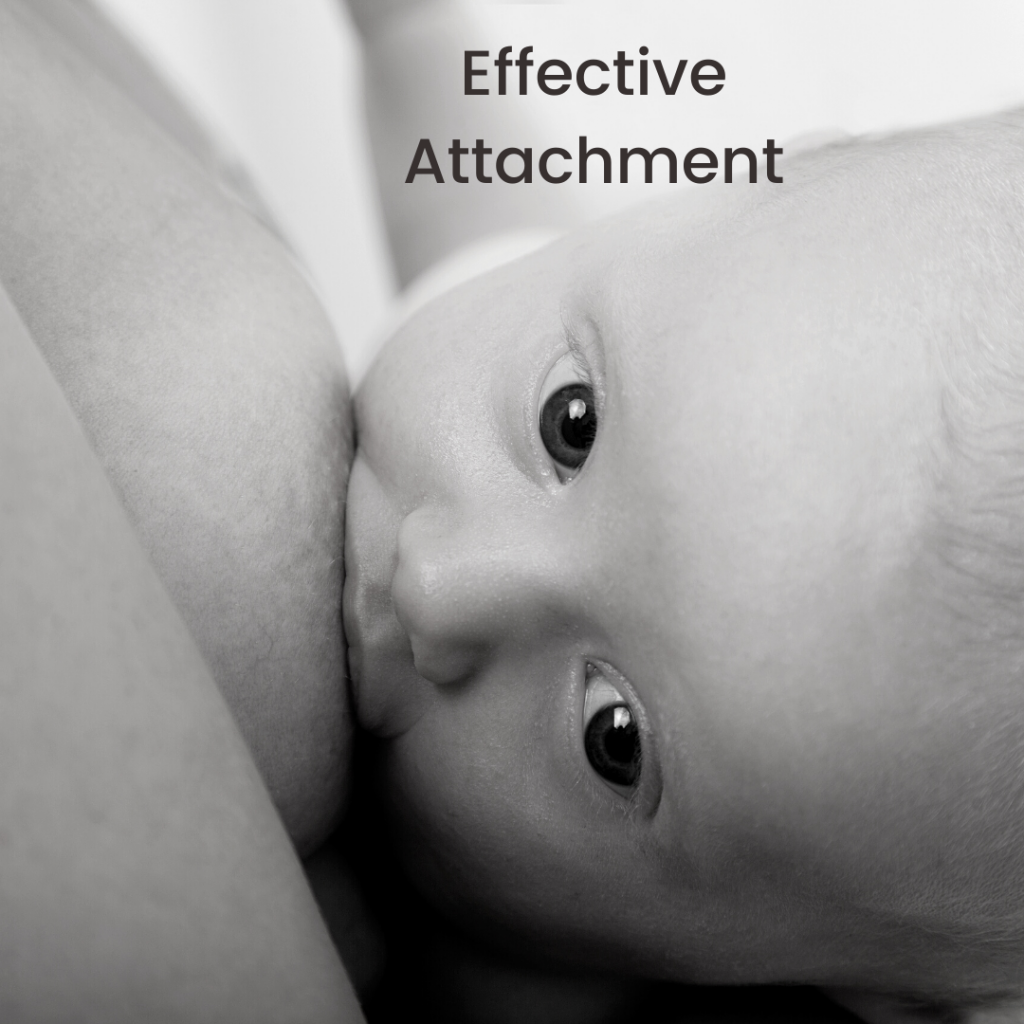Here’s our condensed guide to storing breast milk. We hope it covers all the basics and any common questions and concerns.
Effective Attachment
Are you feeling concerned about baby’s latch onto the breast?
Did you know…many breastfeeding challenges can be overcome with tweaks to positioning & attachment…
Breastfeeding in Public
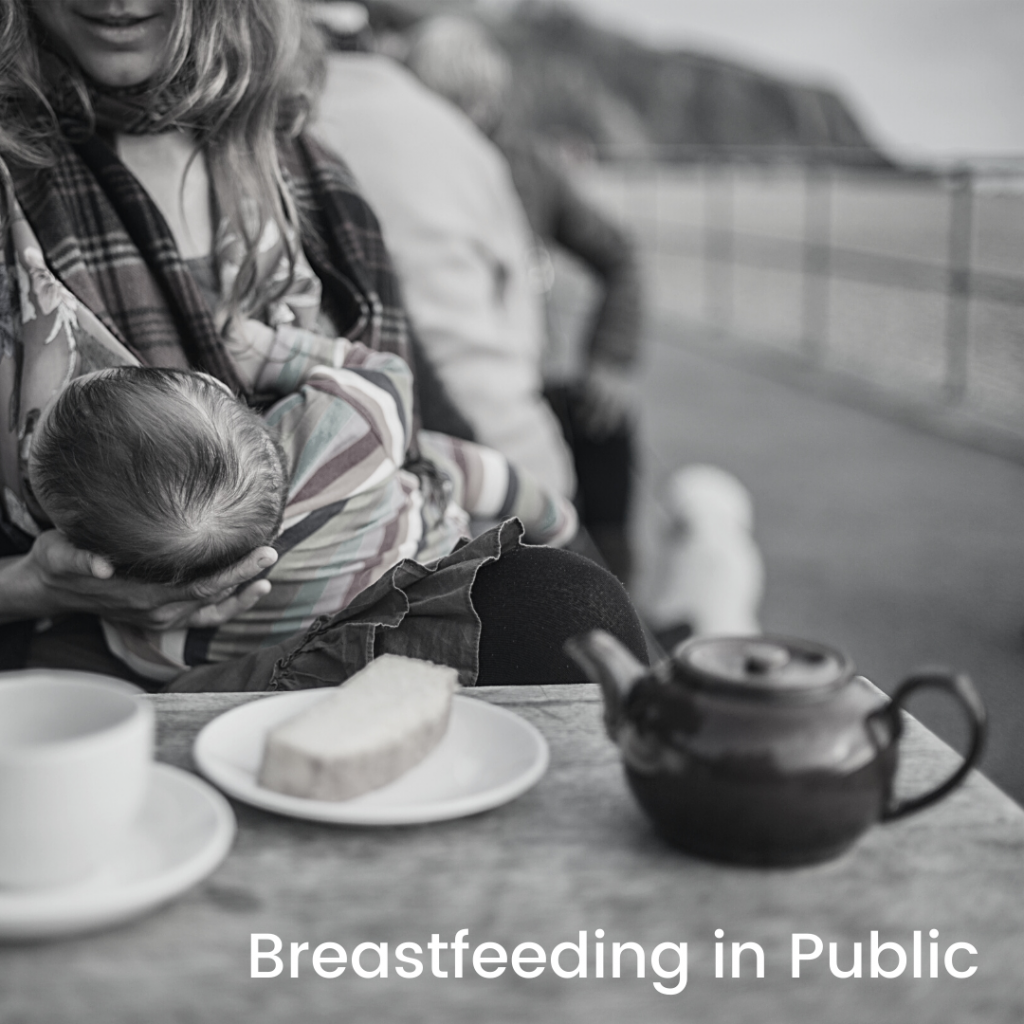
When breastfeeding out and about you are completely backed by law to feed wherever you are allowed to be publicly.
The Equality Act 2010 made it illegal for anyone to ask a breastfeeding woman to leave a public place such as a cafe, shop, train stations or on public transport in the UK.
However, even though the law is on your side it still doesn’t mean every public feed is a simple one. It can take a while to feel comfortable feeding in public. If you are new it or have been avoiding it here are a few points to consider:
💜 Most shopping centres, department stores and supermarkets should have a dedicated baby room with a nursing chair in a private area. These vary in standards and some are definitely below par but newer buildings tend to have better, cleaner baby rooms. Ask other mums if you are unsure, there may be a hidden gem in your local area!
❤ Cafes and coffee shops make a good place to feed if you don’t require complete privacy. They offer a clean comfortable space that’s less crowded and are generally baby friendly.
💙 Never feel like you need to feed your baby in the toilet! If you are at a loss for private feeding places then a changing room in a clothing store is always a good back up.
💚 The pros to feeding in public are the convenience of not having to time your outings around feeds or cut short your trips. It also means you can relieve full breasts and don’t need to worry about sterilising pumps and bottles to express before leaving the house.
🧡 If you find you still have anxiety about feeding in public it may be helpful to it talk through with a peer supporter. Our Milk Mates groups can be a really lovely and supportive place to feed in public for the first time. We also have separate private spaces to feed if that’s more comfortable for you 😊
What is it like feeding out and about in your local area? Let us know in the comments!
Pain Relief and Breastfeeding
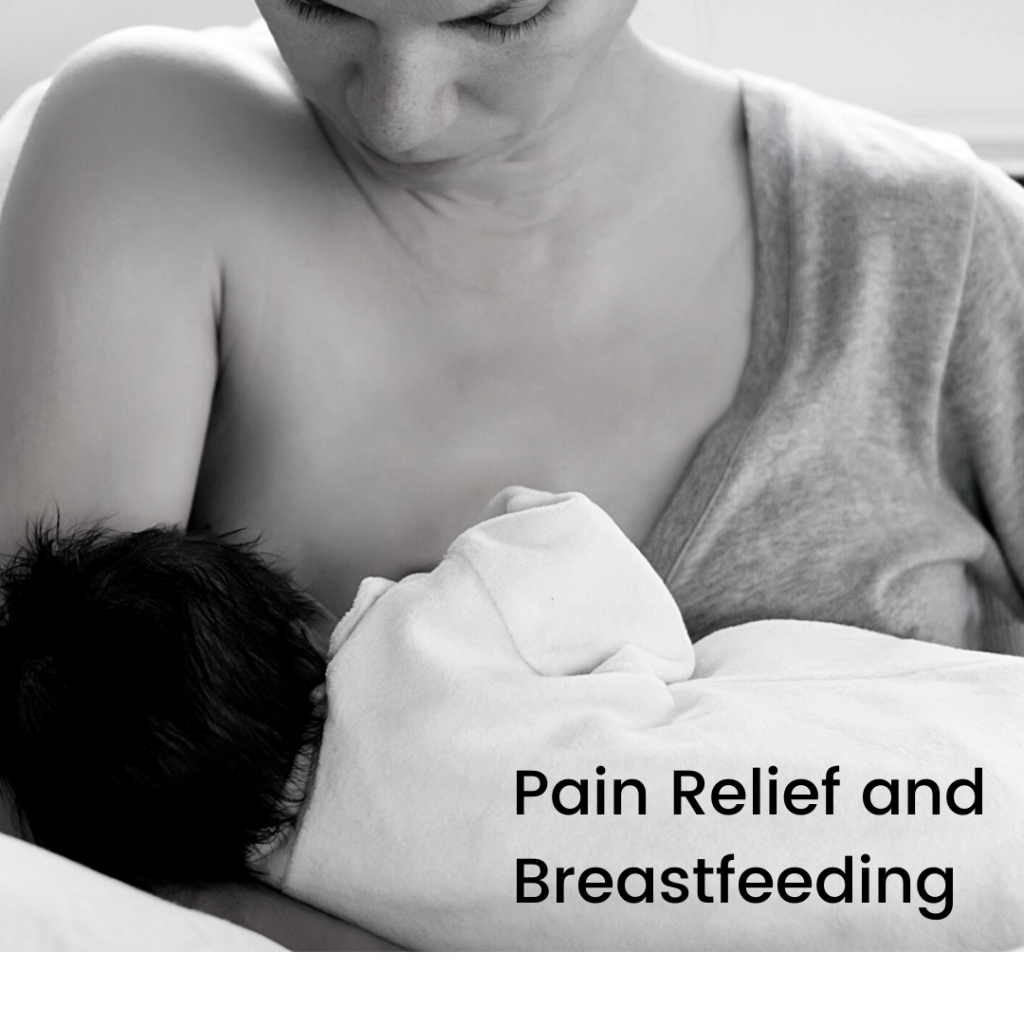
After giving birth, no matter what happened during your labour, you may find you feel some pain. If you are breastfeeding, the Drugs In Breastmilk Information Service has lots of useful, evidence based resources on the types of pain relief you can take. For full details, please see the link below or search “Drugs in Breastmilk” and look for the Breastfeeding Network page.
“Paracetamol and Ibuprofen form the basis for safe analgesics for breastfeeding mothers”
They also have lots of other factsheets on a range of different medications. If in doubt, you can look them up yourself or signpost your healthcare professional to the information.
Introducing Solids…
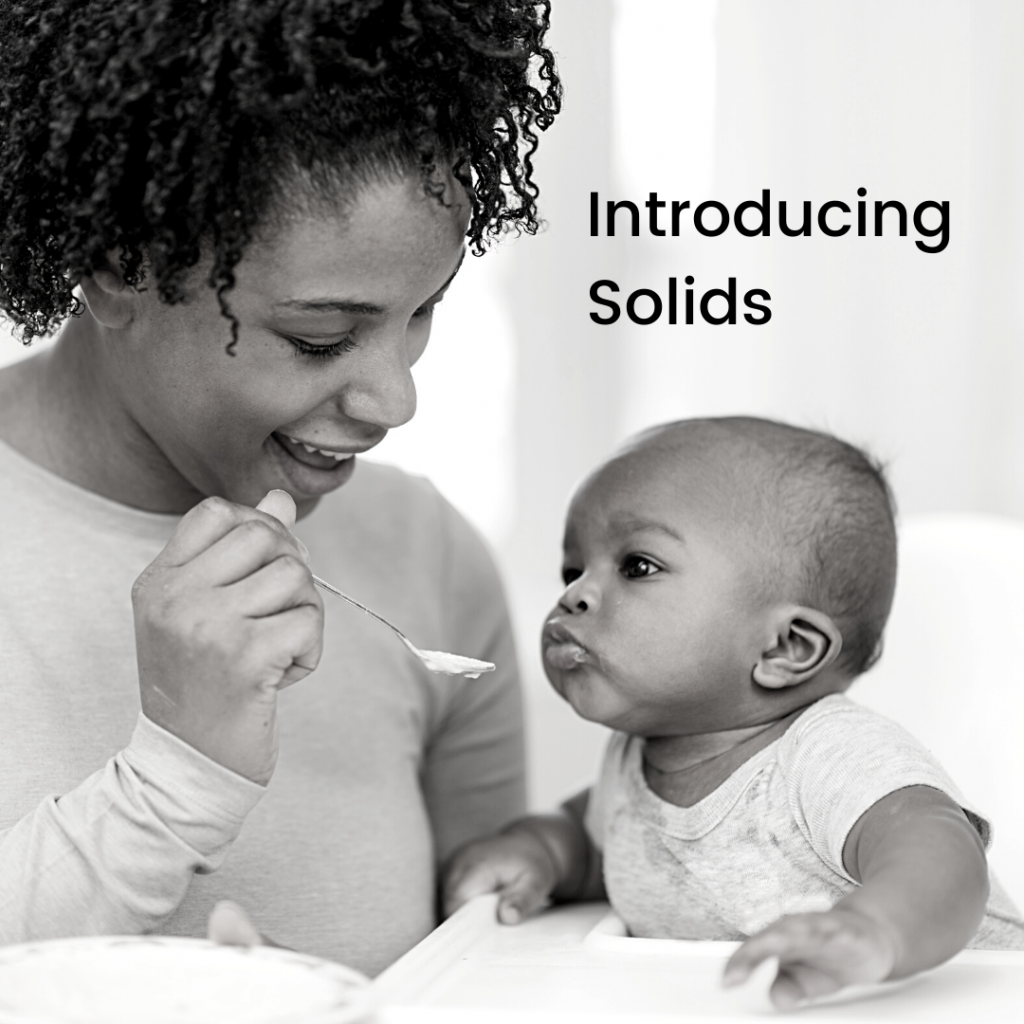
Starting solid food with your baby can be a really exciting time, sharing your favourite meals and tastes as a family. But how do you know when it’s time to begin weaning?
There are 3 clear signs, which, when they appear together from around 6 months of age, show your baby is ready for their first solid foods alongside breast milk or first infant formula.
They’ll be able to:
❤ stay in a sitting position and hold their head steady
❤ co-ordinate their eyes, hands and mouth so they can look at the food, pick it up and put it in their mouth by themselves
❤ swallow food (rather than spit it back out)
These other behaviours are very normal for babies and do not mean they are ready to start solid foods: chewing their fists; waking up in the night (more than usual); wanting extra milk feeds. Try increasing baby’s milk feeds if you think they are hungry before starting solid foods if the 3 signs above aren’t showing yet.
Starting solid foods will not make your baby any more likely to sleep through the night.
If you’re not sure, or you have any questions about starting solids, get in touch with your health visitor, or check out this useful resource:
https://www.unicef.org.uk/babyfriendly/wp-content/uploads/sites/2/2008/02/Start4Life-Introducing-Solid-Foods-2015.pdf
Sicky Babies
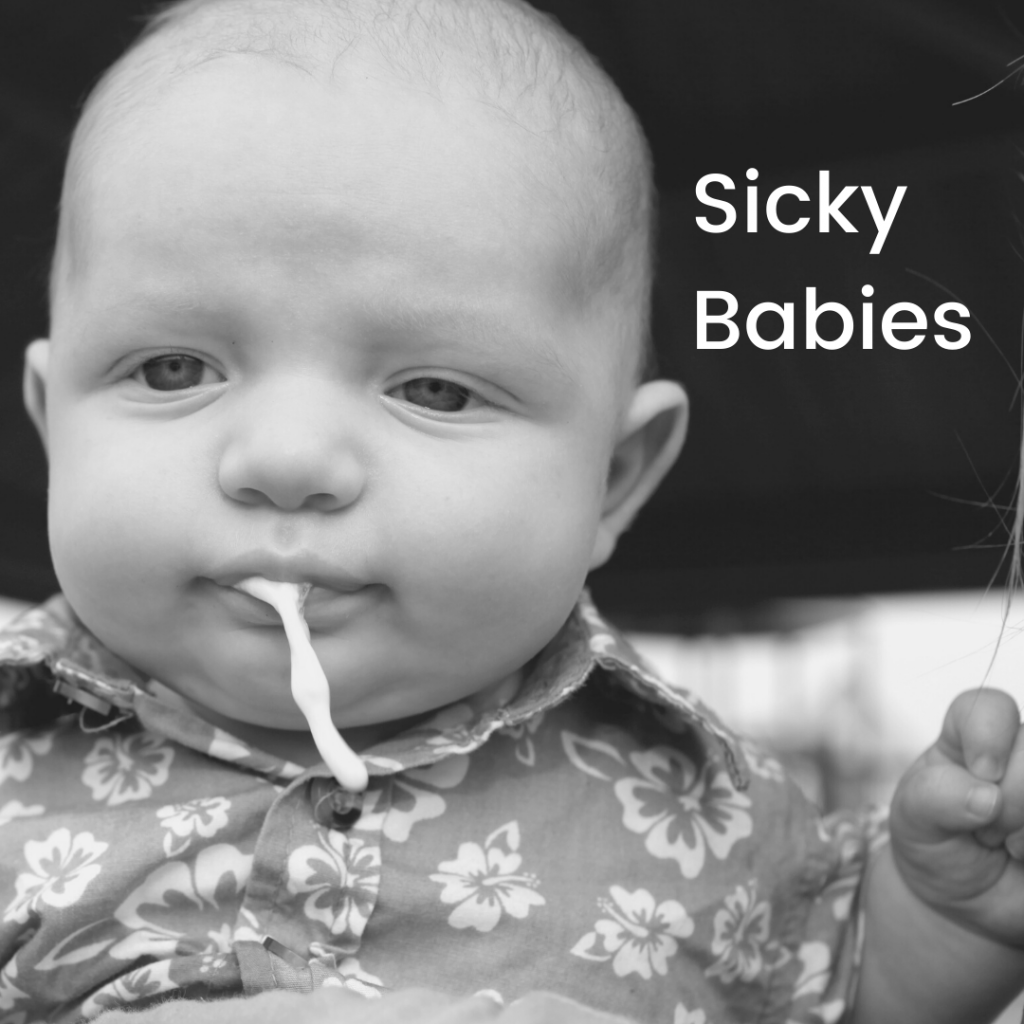
When babies are first born, and in those early weeks, it is very common for them to bring up milk – their digestive system is still getting used to working in the world!
Why does it happen?
In the first year of life the muscle at the top of your baby’s stomach is still developing and may allow milk and acid to come back up in the form of a ‘posset’ or ‘spit up’. It is common in the first three months and normally stops by the time they are one year old.
In most babies, sick is nothing to worry about (as long as they are healthy and gaining weight as expected) although you may be finding it quite a large laundry problem!
Some babies may cry or seem irritable, or have hiccups/coughs – while it is hard for us as parents to see this, sick still generally doesn’t need medical investigation. Sometimes positioning and attachment support with breast/bottle feeding can be helpful.
In some rare cases a baby will be diagnosed with GORD (gastro-oesophageal reflux disease). If you feel like your baby is being sick very often, is in pain and unsettled after feeding and is not gaining weight as expected contact your GP.
Links:
https://www.nhs.uk/start4life/baby/breastfeeding/breastfeeding-challenges/reflux/
https://abm.me.uk/breastfeeding-information/reflux/
Why won’t they take a bottle?
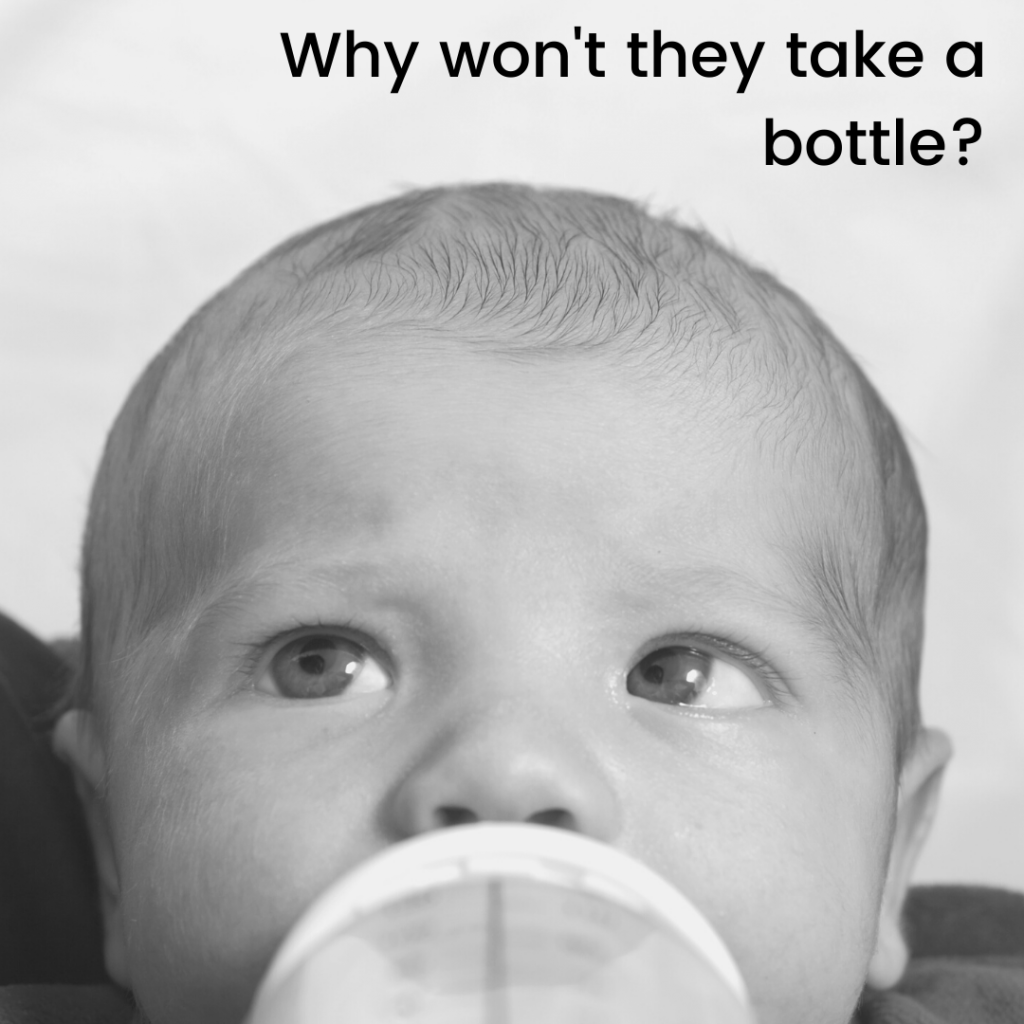
For many reasons, some breast/chestfeeding parents need or want to provide milk for their babies in a bottle.
Babies that haven’t done this before, need some time to adjust! Even those who have been receiving milk this way regularly (e.g. every morning feed), may suddenly change their preference as time goes on.
This can bring up a lot of emotions – worry about how baby will cope when you are separated, a feeling of losing your rest time…even rejection if a partner or supporter had been regularly feeding this way.
Feeding at the breast/chest is much more than food – it provides comfort, security, connection and even a way to fall asleep. It’s worth remembering this as you begin to introduce (or re-introduce) a bottle feed.
Some tips that may help:
Get skin to skin, snuggle in and hold baby in their usual at breast/chest feeding position. You could even switch sides mid way through a feed.
In complete opposite to the above, try a very different position, or even location – a garden feed?
Pay attention to how baby is attaching to the bottle in the same way you would at the breast/chest – a short teat and wide base can support effective attachment. Look for feeding cues and try to offer before baby is very hungry.
Take some deep breaths, and relax before offering. Work out ways to reduce any worry you have, so baby doesn’t notice. Singing, chatting, or even moving around can help both of you to feel calm.
And for all parents using bottles to give their baby milk, remember:
– paced feeding
– responsive feeding
– other options beside bottles
– expressing and storing human milk
– safer formula preparation

